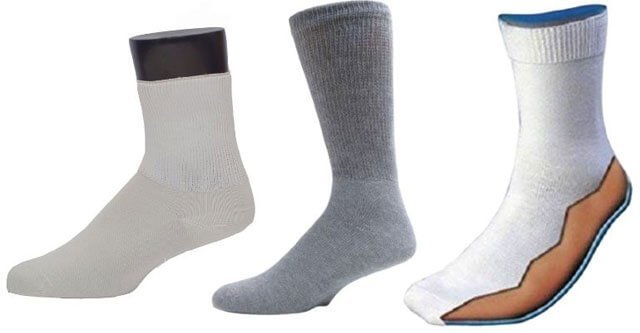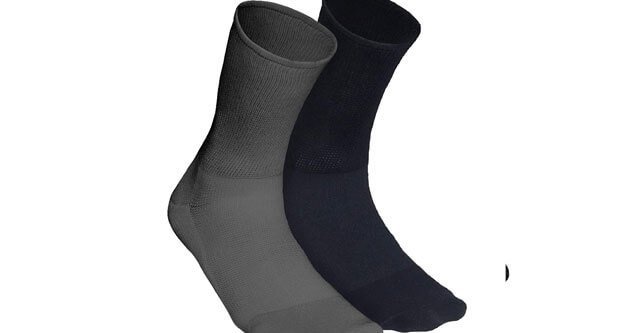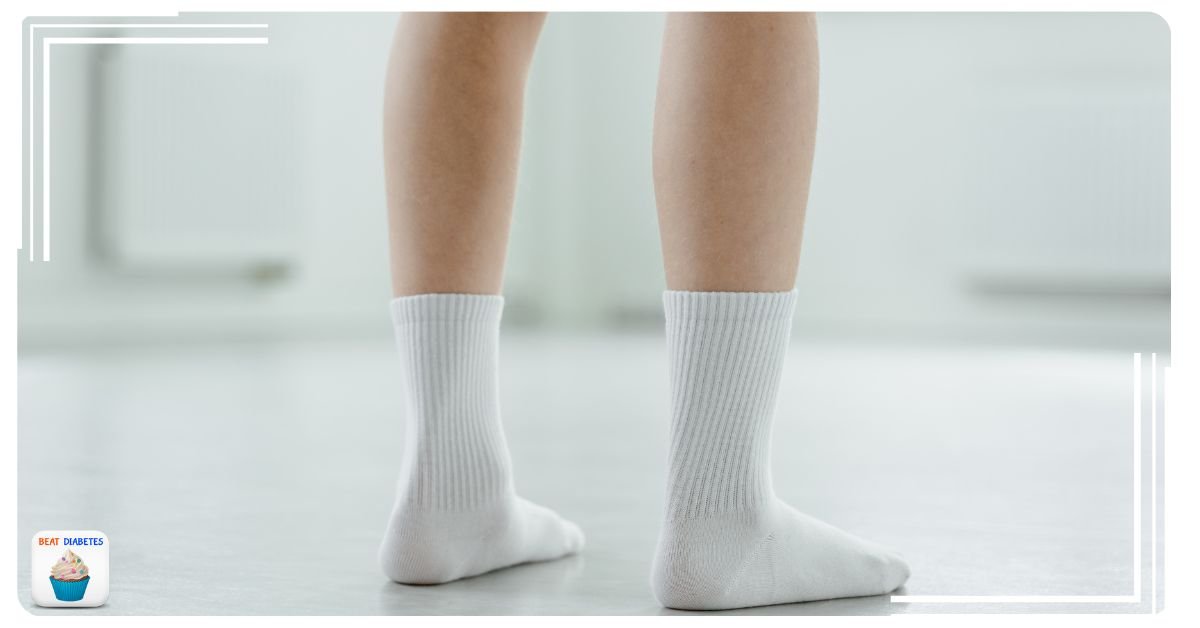Last Updated on March 9, 2023 by Dr Sharon Baisil MD
Diabetes is a condition that brings several complications in health and leads to many discomforts in the body. With managing your diet and activity routines, you also have to pay more attention to taking care of your body, both internally and externally.
Diabetes comes with problems in the joints, and arteries, neural disorders, vision disorders, skin issues, etc. There need to be efforts in all of these ways to control them and improve your overall diabetic lifestyle.
These discussions will help you find proper ways to take care of your feet and eliminate any chances of discomfort or severe issues.
Moreover, we will provide you with various options to choose from to opt for a way to care for your feet, according to your convenience.
So, let us get started with learning about diabetes and Foot problems.
Diabetes and Foot Problems

Diabetics are at a greater risk of developing foot problems and related issues. These can range from daily irritations to severe conditions of foot pain.
Diabetics can experience foot pain, swelling, skin problems, foot neuropathy, joint pains, movement restrictions, numbness, increased cuts, and wounds with weak healing properties, and many more.
These are all related to one’s blood sugar issues. Diabetes is a chronic disease and cannot be mitigated in just days. It needs a prolonged period of care and a proper diet with exercises. Controlling diabetes is important to improve all the other symptoms that assist this condition.
With improper blood glucose levels in the body, one becomes more vulnerable to developing and suffering from other diseases. Foot problems and neuropathy are among the many problems that diabetic individuals experience.
Diabetes can often lead to nerve damage, which in turn results in issues of neuropathy. This is the reason behind diabetic foot problems, including loss of sensation in the feet, pain, increased risks of injury, deep wounds, etc.
There are several ways of diabetic foot care that one can use to maintain and manage diabetic health and its other effects.
There are special socks and shoes designed to help with diabetes. Moreover, several creams and ointments are used to treat feet dryness, blisters, cuts, wounds, numbness, pains, swellings, etc.
But why is it necessary to use all this? Is it really important? Well, let us answer these for you.
Why is Diabetic foot care necessary?
Just now, we had a look at the foot problems one can suffer as a diabetic patient of blood sugar issues. Well, we also mentioned that it is necessary to engage in foot care and management. But why is it so? Why does this happen?
With blood sugar issues, the circulation of blood in the body gets restricted. It interferes with the flow of blood to the feet as well. This may lead to blocked and narrowed arteries, especially in the feet.
Diabetic foot neuropathy can be very serious if not taken care of. The following are some effects diabetes can have on one’s foot health:
- Blocked arteries in the feet can cause internal blood clots, tingling sensations, swellings, or loss of feeling in the feet as well. These, in turn, can make the feet more vulnerable to getting injured and developing cuts, sores, and wounds.
- Due to less flow of blood and reduced circulation, the healing ability also decreases. This leads to increased periods of open cuts and wounds. This can eventually lead to risks of infections. Prolonged infections can result in conditions such as – Gangrene, which is a condition of dead tissues followed by pain, numbness, discharge, etc.
- Issues such as gangrene and foot ulcers can get worse if not treated and cured. It can get very severely painful and lead to situations needing amputation of limbs, feet, and toes, sometimes. Amputations may get necessary to prevent the infection from spreading all over the body.
- Neural disorders and reduced blood circulation can also lead to bones and structural disorientations. It can begin with signs of redness, swelling, pains, etc., and eventually, lead to weakness and even breakage in the bones. It can lead to disorientation of the foot’s shape and related issues.
Thus, due to the reasons mentioned above, one must engage in active foot care.
Diabetic socks come on the front lines of diabetic foot care. Let us know more about them.
What are diabetic socks?

As the name suggests, these are socks specifically designed for patients with diabetes to manage and help their feet. They include several features that protect the feet from injury or harm and also offer prevention.
These socks can be up to the knee as well to offer proper treatment to the whole leg. These socks are designed to offer comfort as well as protection. They are made to be wearable for long hours.
There are numerous factors that one needs to keep in mind before buying the right socks for their feet. We will discuss them eventually. But first, let us see how they function and if they are reliable.
Are diabetic socks worth it?

Diabetic socks are very effective ways of foot care.
Their first and foremost function is that – they allow better circulation in the leg. Diabetic socks are made to provide the right amount of compression and pressure on the feet.
This is necessary for the efficient flow of blood. Well, other functions of these socks include:
- Keeping the feet away from dust and dirt.
- Keeping it dry and clean.
- It keeps away the risks of germ or fungal infections.
- Provides cushion to release strain.
- Covers wounds or cuts and prevents infection or spreading.
Due to these reasons, diabetic socks are a great way to relieve your feet from pressure and the risks of infestation.
The compression it provides keeps the feet comfortable and avoids unnecessary freeway movement that can cause jerks, hits, etc.
They can be easily worn with shoes. It provides proper grip and firmness without creating more risk.
What are some things that you might need to keep in mind before buying diabetic socks?
How to choose your diabetic socks?

Well, first of all, the use of diabetic socks must be accompanied by your doctor’s consultation as well. Diabetic socks are only necessary for those who suffer from diabetic foot neuropathy or improper blood circulation.
If you are not a victim of the same, you must still take care and avoid diagnosis risks.
But if you have foot neuropathy and are advised to wear diabetic socks, here are some points to keep in mind. What are some of the qualities of the best diabetic socks?
- It should be your perfect size. Too loose or too tight diabetic socks can lead to no pressure or intense pressure on the foot, respectively. This can have serious harm or absolutely no benefits at all.
- The socks must not have very tight cuffs. This can lead to a restriction in the blood flow.
- They also should not bunch up or develop folds in places. This can lead to unequal distribution of pressure, hampering blood flow.
- Choose fabrics that are moisture-absorbent. These socks will assist in keeping the feet dry and create lesser risks of infection too. To aid these features, you can go for merino wool, acrylic, and bamboo fiber socks.
- Soft and stretchy fabrics also don’t hamper the existing foot condition, cutes, blisters, etc.
- There must be extra protection at the heel and ball of the foot for maximum protection of the feet.
- The socks you choose can also be lighter in color. This will allow you to judge if there is any discharge from your feet.
There is a myriad of options available out there that you can choose from. To make this task easier for you, below we have a list of diabetic socks and good features and reviews.
10 Best Diabetic Socks in 2023
You can look for diabetic socks in medical stores as well as on online websites. There are several kinds available. We have selected the best few that you can have in 2023. Here is the list:
- Scholl’s:
- School’s Women’s Diabetic and Circulatory ankle socks
- Scholl’s Men’s Premium Diabetic and Circulatory socks
- TeeHee Viscose Diabetic Sports Socks
- EMEM Apparel Diabetic Dress Crew Socks
- Yomandamor Cotton Diabetic Socks
- Yomandamor Bamboo Diabetic Socks
- OrthoSleeve Wellness Socks
- Cresswell Sock mills Diabetic Socks
- Helium Diabetic Socks
- Wigwam Thermal Diabetic Socks
- Syounaa Diabetic Socks
This list provides you with a variety to choose from. You can go to your preference as per your daily requirements.
There are sports, daily wear, work, etc., and specific socks to suit your needs.
You can choose your socks fabric-wise as well to ensure moisture absorption. These socks also offer different temperatures because of the variety of fabrics.
It is important to also look for your foot issues and their requirements to assure a safe choice.
Along with that, follow foot care measures like – proper washing and cleaning, nail trimming, foot checkups, wearing shoes and socks always, and so on.
References
- https://www.sciencedirect.com/science/article/abs/pii/S1959031814000220
- https://www.sciencedirect.com/science/article/abs/pii/S0168822716302017
- https://www.koreascience.or.kr/article/JAKO201121538716184.page
- https://yadda.icm.edu.pl/baztech/element/bwmeta1.element.baztech-53022c8c-c172-4cf9-a6fc-dfa0d9566857
- https://www.sciencedirect.com/science/article/abs/pii/S0965206X19301147
- https://care.diabetesjournals.org/content/16/8/1190.short
- https://www.sciencedirect.com/science/article/abs/pii/S0306987709003764
- https://journals.sagepub.com/doi/full/10.1177/1932296817709022
- https://care.diabetesjournals.org/content/12/9/653.short









